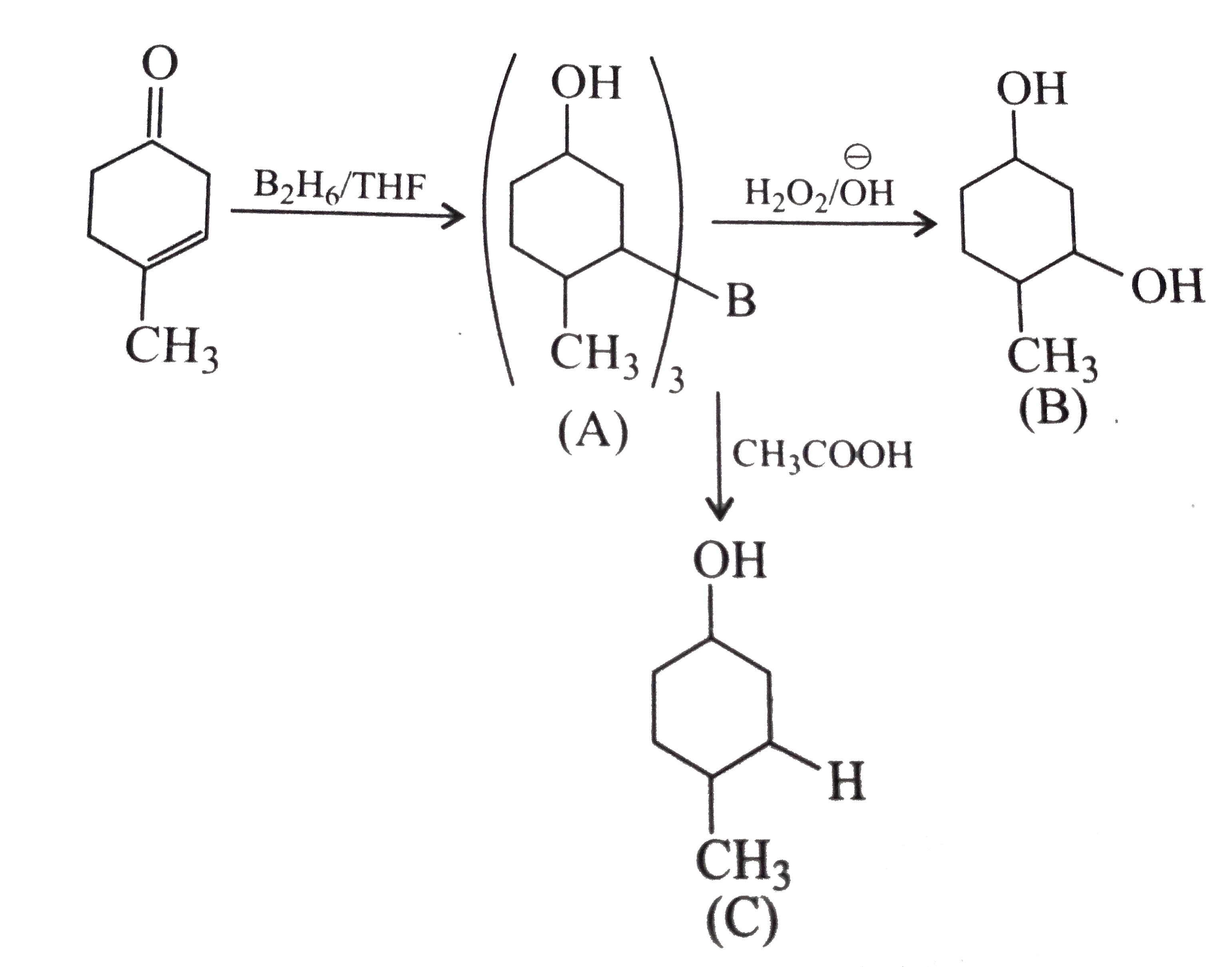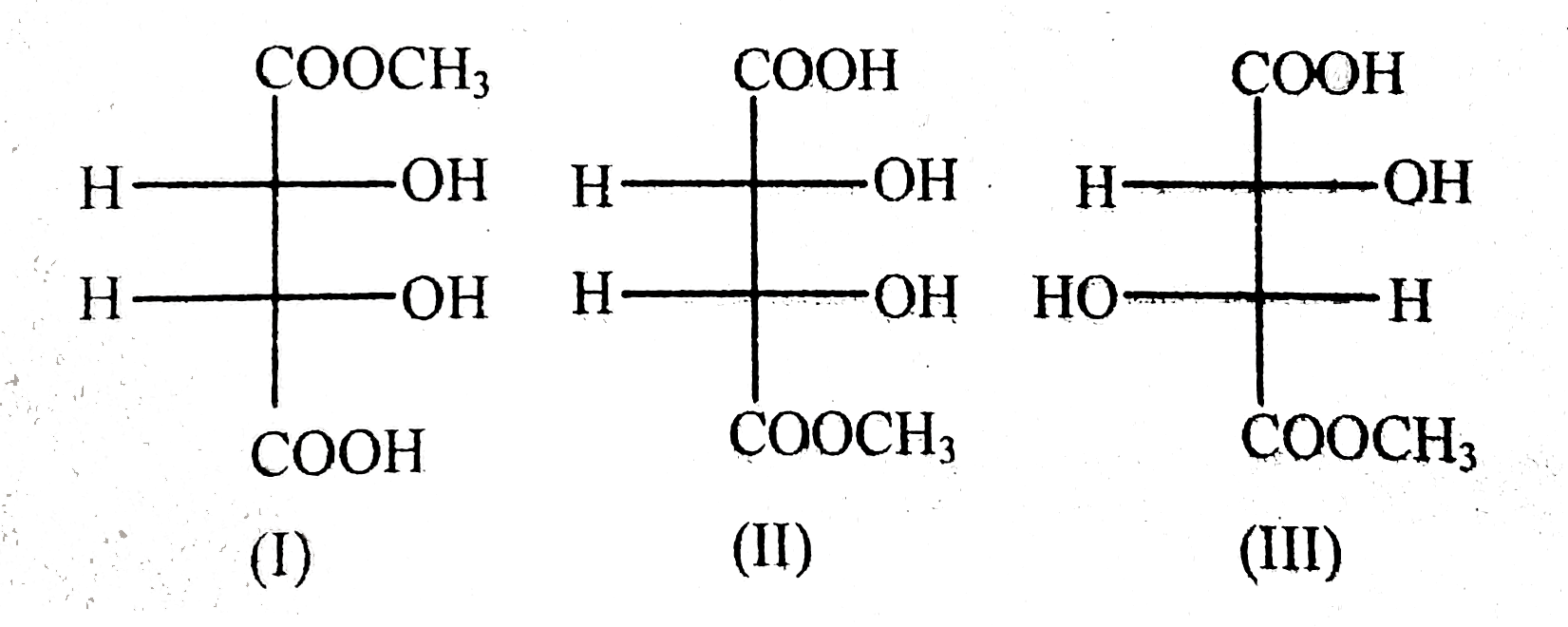
Three compounds I, II, and III are given.
(I)  (II)
(II)  (III)
(III) 
The compounds (A), (B) and (C ), respectively, are:
A
I, II, and III
B
I, III, and II
C
II, I, and III
D
II, III, and I.
Text Solution
The correct Answer is:A
B2H6/THF also reduces (C==O) group to (−CHOH) group and (−COOH) group to (CH2OH), alolng with reacting at (C=C) bond to form alcohol (anti-Markovnikov's rule).

|
Topper's Solved these Questions
- ALCOHOL,PHENOL AND ETHERSBOOK - CENGAGE CHEMISTRY ENGLISHCHAPTER - ALCOHOL,PHENOL AND ETHERSEXERCISE - Exercises Assertion-Reasoning
5 Videos
- ALCOHOL,PHENOL AND ETHERSBOOK - CENGAGE CHEMISTRY ENGLISHCHAPTER - ALCOHOL,PHENOL AND ETHERSEXERCISE - Archives Single Correct
14 Videos
- ALCOHOL,PHENOL AND ETHERSBOOK - CENGAGE CHEMISTRY ENGLISHCHAPTER - ALCOHOL,PHENOL AND ETHERSEXERCISE - Exercises Multiple Correct
24 Videos
- ALIPHATIC AND AROMATIC ALDEHYDES AND KETONESBOOK - CENGAGE CHEMISTRY ENGLISHCHAPTER - ALIPHATIC AND AROMATIC ALDEHYDES AND KETONESEXERCISE - Archives Subjective
26 Videos
Similar Questions
Knowledge Check


I, II and III respectively areAparacetamol, aspirin and ibuprofenBparacetamol, diclofenac sodium and aspirinCaspirin, diclofenac sodium and paracetamolDibuprofen, paracetamol and aspirin_2019_CBT6_E01_023_Q01.png)
Graph I,II & III are respectively.AN2 at 300K,H2 at 300K,O2 at 400KBO2 at 400K,N2 at 300K,H2 at 300KCH2 at 300K,N2 at 300K,O2 at 400KDN2 at 300K,O2 at 400K,H2 at 300K(i)

(ii)
Compound(C)is:A(I)B(II)C(III)D(IV)
(i)

(ii)
Compound(B)is:
View Solution
Arrange the compounds I,II and III decreasing order of their heats of combustion:
View SolutionThe correct statemetents about the compounds I,II and III

View Solutioni. Compound (A)

ii. Compound (B)
iii. Alkene (C) and alkane (D)
Compound (A) is:
View Solutioni. Compound (A)

ii. Compound (B)
iii. Alkene (C) and alkane (D)
Compound (A) is:
View Solution

